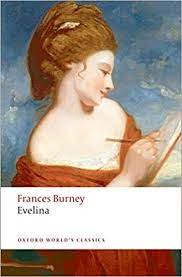On the day my childhood best friend died in a car accident, it began raining minutes after I heard the news. A year later, on the first anniversary, the sky emptied itself once again, as if on purpose. When rain fell three years in a row, I truly began to believe that the sky, like myself, was crying for Ansley on those dreaded, solemn February days as well. It rained every year after that. In 2020, the first anniversary whilst in college, I was sure that the rain wouldn’t come. The forecast predicted sun, I was three hundred miles away from the Florida sky that promised to always cry with me, and I felt so incredibly alone. I’ve never been more mad at the sun. In a miraculous turn of events, a raindrop landed on my cheek as I was walking to class, out of thin air, for there were no clouds in the sky. Gradually, it began raining from the bright, clear sky, and there I stood on Lumpkin Street, in the sun and in the rain, crying alongside the sky, suddenly feeling less alone. It’s been six years now, and every year, I am thankful for that rain, for that miraculous reminder of the divine while I face tragedy. Perhaps it is purely coincidence, as both Georgia and Florida are not infamous for a lack of rain. But I, perhaps because I am a writer, choose to see this worldly phenomenon as evidence of the divine. When reading Ordinary Light by Tracy K. Smith, I was struck by just how similarly she recounted her mother’s death and the months that followed, and I believe our shared perspective can be described by both mine and Smith’s identity as a writer. Poetry, then, shapes how both of us move through the world.
Existing in the world as an artist requires finding fresh things to say about ordinary phenomenons that render them full of light, for creation is always the goal of an artist’s sensory experience in the world. We all have the same five senses, yet writers continually find new things to say about them. Smith’s Ordinary Light argues that creation generally, and writing more particularly, can operate as a vehicle for the rebellious pursuit of worldly knowledge, as a container for both grieving the lost and rendering the lost reanimated, and ultimately as a kind of religion in and of itself.
Throughout Ordinary Light, Smith illustrates that her rebellious path of coming to knowledge relied explicitly on creation, literature, and writing. But Ordinary Light refuses to limit this function of creation to Smith alone, for her reliance on creation to enact rebellion is inherited. Kathleen, her mother, illustrates the same pull towards creation as rebellion whilst crafting a Halloween costume for her young daughter. When the five-year-old Tracy requests a homemade ghost costume, Kathleen enacts creative agency in fashioning a hybrid ghost-Ku Klux Klan costume, an allusion which went over Tracy’s head at the time. “Was stitching up a mini Klan costume for her unsuspecting five-year-old a way of depleting the image of whatever lingering private terror it might have held for her?” questions the now-adult Tracy, defining her mother’s creation as a reclaiming of power, as her mother’s own private rebellion (Smith 34). It would be years, however, before Tracy would understand the true implications of this Kindergarten costume, and this worldly knowledge presented itself through literature. Due to both her mother’s unwavering faith in God and her father’s unwavering faith in the American dream, discussions of American racism were largely absent from Tracy’s childhood. To learn about such a thing, to look it in the face, constituted a rebellion against Tracy’s upbringing. And rebel she did. “As far as I was concerned, my awakening had started in the fall of sophomore year, with a course on African American literature. When we read Ralph Ellison’s Invisible Man, I’d felt, possibly for the first time, like I was capable of looking at racial injustice without blinking,” writes Smith, conveying that her understanding of the particular strand of racism reserved for America was developed by literature (Smith 283). Literature, then, allowed Smith a space to rebel against the conventional familial dialogue. Writing, too, constituted the space in which Smith came to understand ordinary human desire, a facet of life that her familial belief system suppressed. Through a compelling anecdote describing an epistolary affair with a high school teacher, Smith communicates that writing letters was synonymous with her first experience of intimacy and desire. “My teacher’s letter changed things. It made it suddenly and forcefully clear to me that I could – already did – have desires … I took to my room, my bed, reading, writing, daydreaming, extrapolating from the tiny sliver of passion that I had been privileged to house. I felt so alive,” explains Smith, recounting the way that writing and being written to, quite rebelliously, introduced her to corporeal human desire (Smith 215, 219). As these three examples illustrate, creation, literature, and writing operate within Ordinary Light as tools to utilize in the rebellious pursuit of worldly knowledge.
I began writing seriously after Ansley died, precisely because I, like Smith, wanted to hold on. Throughout Ordinary Light, Smith reminds the reader that writing built a safe space to both process grief over her mother and to reanimate her, rendering her alive once again in the literary present tense. From the very outset of Ordinary Light, Smith is not hesitant to admit that her purpose in writing the memoir is to process her own complex emotions about the life, death, and (potential) afterlife of her mother. “It’s been twenty years now. I’ve forgotten so much that I once forbade myself to forget,” writes Smith in the opening chapter, defining this novel as a desperate attempt to cement her remaining memories into permanency before they inevitably slip from her grasp (Smith 7). In choosing to grieve through writing, Smith is also allowed the power to imagine her speaking once again, hugging her corporeally once again, living in the world again – themes which appear time and time again throughout Ordinary Light. Through writing about her mother on their family trip to Alabama, Smith comes to a realization about the unknowability of all humans, which is a profoundly healing conclusion for a grieving person feeling cheated out of time. “There was so much I would never understand, so much that would never belong to me, not really … but wasn’t there a way to see all of that as a good thing, to take it as proof that we are, all of us, made up of near infinite facets?” writes Smith, illustrating the way in which reimagining the life of a loved one can lead to realizations that assist in grappling with the death (Smith 62). The final evidence for Ordinary Light’s insistence on this function of art, however, comes in the final regular chapter. Therein, Smith shares that reading poetry became a generative ritual after her mother’s death. Poems, she says, continually reminded her that “a life is made of what happens and what is lost” (Smith 336). Art, then, more than any other medium, allowed Smith a place to grieve. “It was then, and not without trepidation, that I let myself imagine that poetry might be a means of getting from this portion of my life to the next,” declares Smith, summarizing the way in which poetry became not only a vehicle to process grief, but also a vehicle to reimagine her mother as alive, to resurrect her, to continue to feel her presence (Smith 339). In doing so, art carved Smith a path forward.
As if healing a grieving soul weren’t a powerful enough function of poetry, Smith takes it a step further through concluding Ordinary Light with an assertion that poetry, and particularly transcendentalism, curated her adult understanding of religion. Following both the death of her mother and the writing of most of this book, Smith, in true transcendental fashion, asserts the following claim in the epilogue: “I feel myself most alive, most electric with faith, breath, and courage, when I think of God as a current that runs through all that is” (Smith 346). This worldview illustrates Smith’s shift from reverence for an unreachable, restrictive God to awe in an ordinary, everyday God – a philosophy derived from the transcendental literature movement. Additionally, writing resurrected Smith’s mother, gave breath and voice back to her. In any traditional religion, resurrection is viewed as a divine miracle, and Ordinary Light argues that poetry, too, can enact divine miracles. Smith, through writing and reading poetry, comes to see the divine in the mundane, searching continually for the light in the ordinary. And the ordinary light presents itself daily, if one simply remembers to look. Existing as an artist allowed Smith to make peace with a God she once doubted so greatly, for it was through poetry that she came to understand the world as much more vast, and much more full of divinity. Ordinary Light asserts that poetry, then, is a divinity in and of itself, for it holds the power to enact miracles in the world. Smith’s Ordinary Light never loses sight of the importance of creation, art, literature, and poetics, for it affects every aspect of Smith’s existence in the world. Ordinary Light argues that creation can function as rebellion, as grief processing, and even as religion, and I believe her argument in its entirety. Smith’s identity as an artist is central to the construction of Ordinary Light, as the continual search for artistic inspiration calls all artists to find the ordinary light in the world around us, which Smith repeatedly discovers. Through existing in the world as an artist focused on creation, Smith harbors the ability to find beauty in tragedy – to see the world through a different lens than the rest of us. She sees the everyday presence of the divine, and she finds the miraculous in the mundane. I can’t help but believe that the sky crying with me each and every year is ordinary light, precisely as Tracy Smith imagined it.




